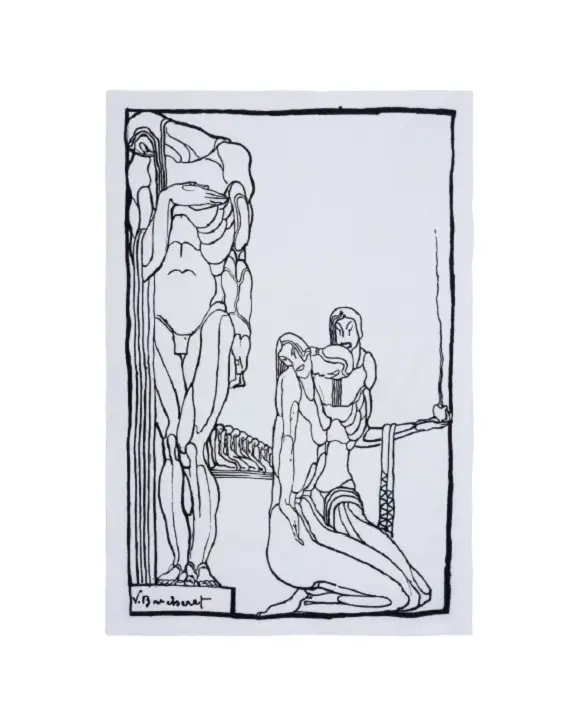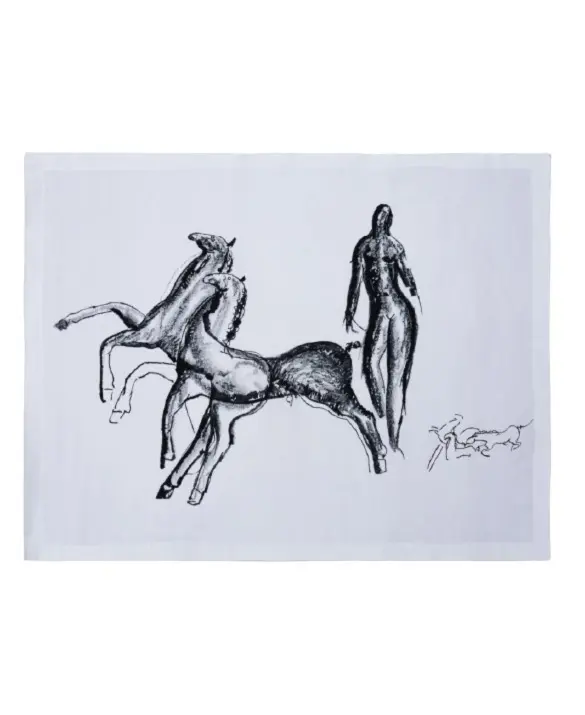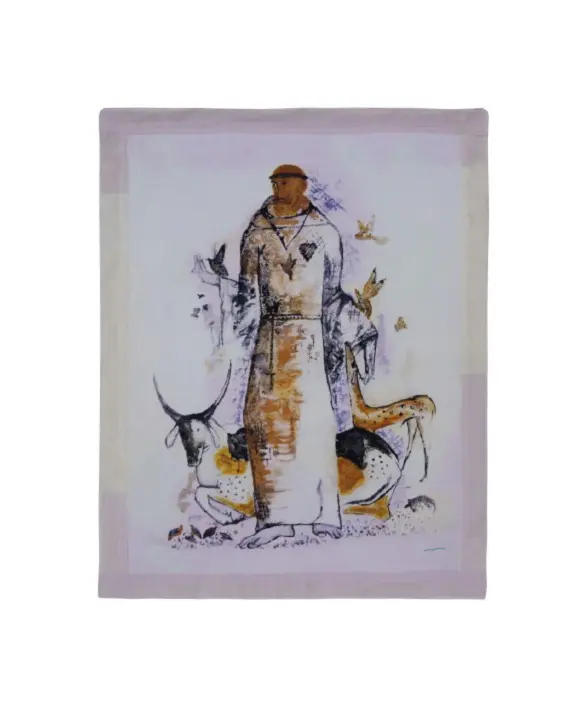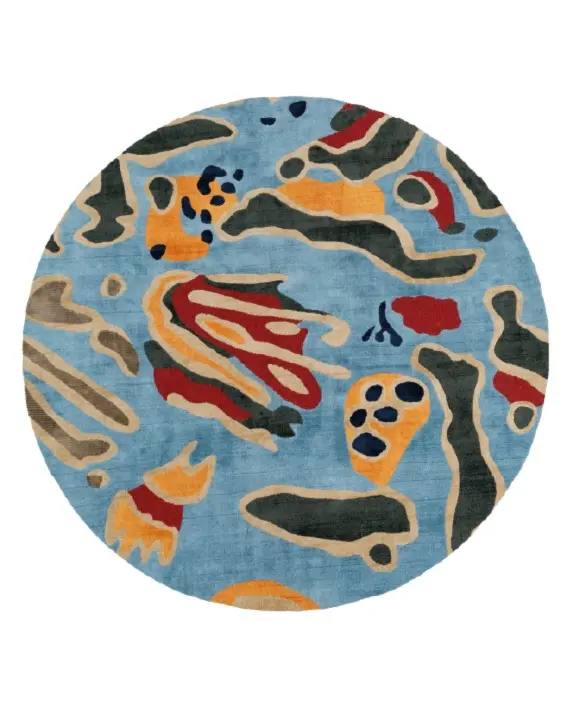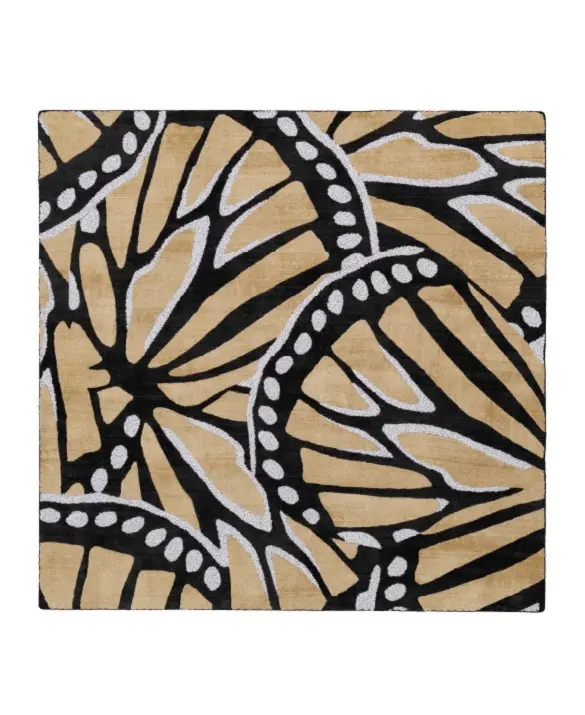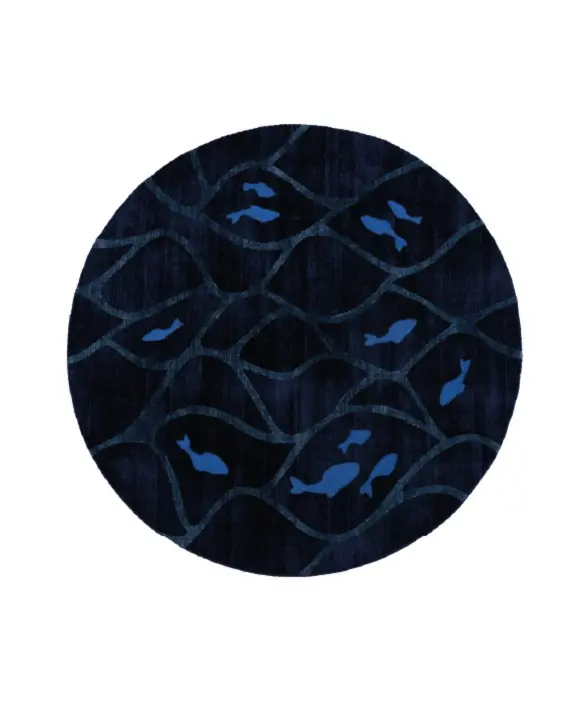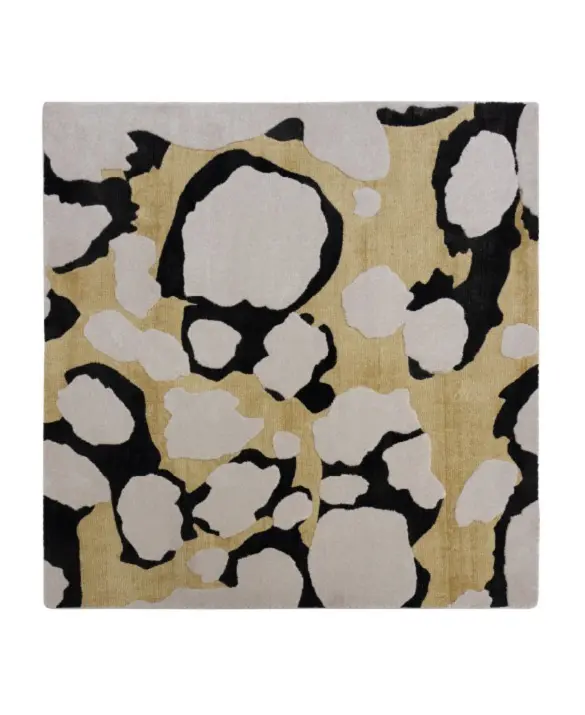ARAZZO TARSILA BATISMO DI MACUNAÍMA
Collection: TARSILA DO AMARAL
Thought by: By Kamy
Category: Accessories
Thought by: By Kamy
|
Category: Accessories

ARAZZO TARSILA BATISMO DI MACUNAÍMA
TARSILA DO AMARAL
1,80m x 0,97m
K152608
ARAZZO TARSILA BATISMO DI MACUNAÍMA
TARSILA DO AMARAL
1,80m x 0,97m
K152608
The work Batizado de Macunaíma is part of the Neo Pau Brasil phase (1950 onwards) by Tarsila do Amaral. A period in which the artist revisited national elements with a more mature and introspective look and brings more elaborate and refined compositions, without losing the modernist essence and the critical look at Brazilian culture. The scene combines references from Afro-Brazilian, indigenous and Catholic culture, composing a unique visual narrative that celebrates the plurality of Brazil. The painting is framed by the Amazonian green with native plants and fruits that surround the main scene, characteristics that refer to Brazilian landscapes and Tarsila's typical compositions and synthesizes her genius by uniting art, literature and social criticism in a single work. By Kamy is the brand authorized by Tarsila do Amaral Licenciamentos S.A. to represent the artist's designs in tapestries and rugs. This piece was made by the embroiderers of the social project 1+1+by Kamy, in free hand embroidery, mixing various types of stitches with different techniques created by them including the use of beads that give a very special touch of discreet shine to the embroidery. It is the artist's first tapestry woven in Brazil.

Tarsila do Amaral was born on September 1, 1886, in the municipality of Capivari, in the countryside of the state of São Paulo. The daughter of landowner José Estanislau do Amaral and Lydia Dias de Aguiar do Amaral, she spent her childhood on her father’s farms. She studied in São Paulo, at the Sion School, and later in Barcelona, Spain, where she painted her first artwork, Sacred Heart of Jesus, in 1904.
Upon returning to Brazil, she married André Teixeira Pinto, with whom she had her only daughter, Dulce.
A few years later, they separated, and Tarsila began her formal art studies. She started with sculpture under Zadig and later took drawing and painting lessons at Pedro Alexandrino’s studio in 1918, where she met fellow painter Anita Malfatti.
In 1920, she moved to Paris to study at the Académie Julian and with Émile Renard. She stayed there until June 1922 and learned about the Modern Art Week (which took place in February 1922) through letters from her friend Anita Malfatti.
When she returned to Brazil, Anita introduced her to the modernist circle, and Tarsila began a relationship with writer Oswald de Andrade. Together, they formed the “Group of Five”: Tarsila, Anita, Oswald, and writers Mário de Andrade and Menotti Del Picchia. They stirred São Paulo’s cultural scene with gatherings, parties, and lectures.
Tarsila would later say that she came into contact with modern art in São Paulo, as until then, her education had been strictly academic. In December 1922, she returned to Paris, and soon after, Oswald joined her there.









